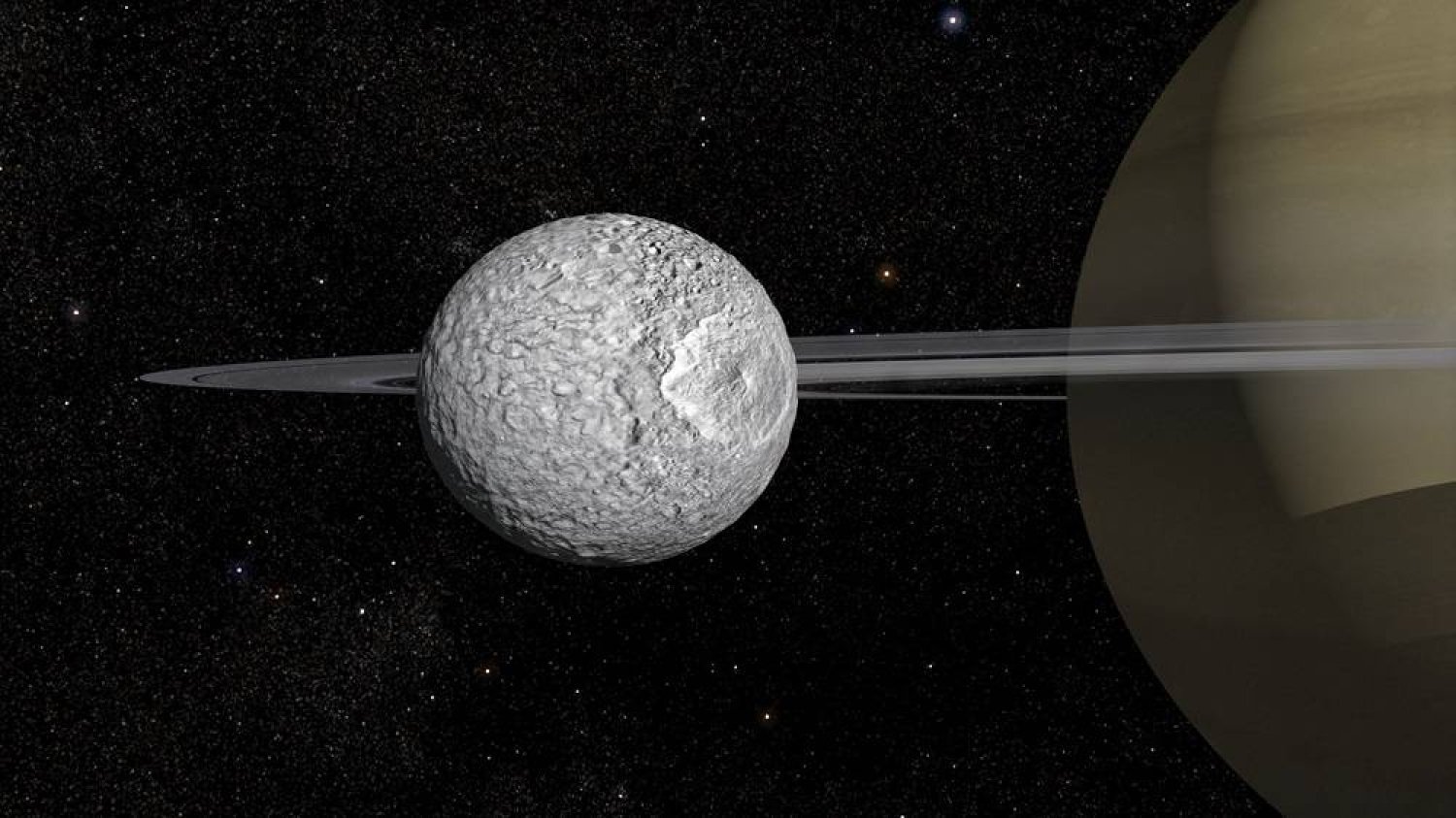According to new observations made by a team of astronomers, Latest measurements of the orbit of Saturn’s moon known as the ‘Death Star’ reveal the presence of a wavy ocean in the region. – Although its appearance resembles a Star Wars battleship, the cosmic object is officially called Mimas.
Experts explain that the liquid ocean must be between 20 and 30 kilometers deep and lies beneath the ice; They even claim that the surface of the moon will only gain meaning with the existence of this mass of water.
Scientists realized from data collected by the Cassini probe that the moon’s oscillation in Saturn’s orbit indicated that something strange was occurring with the natural satellite. In addition to the statement that there is a liquid ocean beneath the surface of the ‘Death Star’, The researchers also wondered whether this strange feature could also be explained by the presence of an elongated rocky core.
After a detailed analysis of Mimas, the researchers ruled out the possibility of a rocky core and concluded that the data actually pointed to an ocean beneath the surface ice. To achieve this result, They ran different simulations to reproduce the motion of Mimas in Saturn’s orbit with the effects of the asymmetric ocean.
“Moons, potentially hosting a global ocean, are becoming relatively common objects in the Solar System. The existence of these long-lived global oceans is often revealed by surface changes resulting from internal dynamics. Therefore, Mimas would not be the most likely place to look for the presence of a global ocean,” the scientists explain in the new paper.
An ocean on the Death Star
According to the study’s simulations, the center of Mimas would need to be extended to have a rocky core, but this is not consistent with other data observed on the Moon. Therefore, the most likely explanation is that the ‘Death Star’ has a structure. The ‘secret’ of the ocean, as in the moons Enceladus and Europa.
The data shows that While the ocean has existed on the moon for less than 25 million years, its depth of less than 30 kilometers only reached this level 2 to 3 million years ago. If the information is confirmed by further studies, the Mimas Ocean could help scientists better understand some fundamental questions about the formation of oceans.
“Mimas offers a unique opportunity to study ongoing melt-induced differentiation and extensive aqueous alteration driven by water-rock interactions. Thus, Mimas provides insight into the past evolution of Enceladus and other now-quiet icy worlds, including the moons of Uranus and Kuiper Belt objects.” “It may provide a window of time,” the researchers add.
Did you like the content? So always stay up to date with more studies on astronomy at TecMundo. If you wish, take the opportunity to learn why astronauts could not land on Saturn.
Source: Tec Mundo
I’m Blaine Morgan, an experienced journalist and writer with over 8 years of experience in the tech industry. My expertise lies in writing about technology news and trends, covering everything from cutting-edge gadgets to emerging software developments. I’ve written for several leading publications including Gadget Onus where I am an author.












